Phase 4
A thorough restoration would be impossible with Thalassa in a boatyard. In Summer 2012 she was moved to the backyard.
The Deck (Again)
Up to this point, only the aft deck has been recored. To have the strongest, stiffest deck possible, the core must be dry and firmly bonded to both the upper and lower deck skins. Thalassa’s decks were cut up in pieces and the wet core material was removed and discarded.
Note the 4-inch lip the was left around the edge. This undercut saw was helpful in cleaning out the core left between the lip and the bottom skin.
The new core material (3/8-inch marine ply) was dry fitted.
Fiberglass strips and epoxy are used for the layup along the seams.
The photo below is significant. It shows the discovery of dry core on the side decks near the front of the cabin house. This is the starboard side, and there was dry core at about the same place on the port side. The significance, of course, is that the core forward of these places need not be replaced. Why is the foredeck core dry? These boats have a significant sheer, which means that water quickly runs off the foredeck, accumulating further aft.
Fairing the deck (filling with thickened epoxy, sanding, and repeating) was a significant job, requiring lots of sanding.
The following photo shows the port deck adjacent to the cockpit after some fairing.
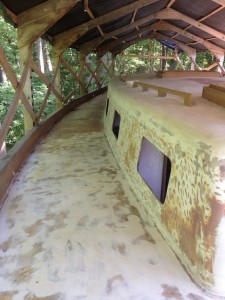
Finally the decks are smooth, the core is dry. You can see here that the teak that covered the cabin-top sides has been removed and the surface has been faired.
The Cockpit
The following image shows the poor condition of the laid teak in the cockpit. There are practically no bungs left and many of the boards are coming up.
The steering pedestal was removed, too, and so was the big stainless inspection port in front of the pedestal.
Much of the deck work was done from scaffolding, so the boat wasn’t completely covered. A dry environment was required.
Teak decking of 2-inch width and 1/2-inch thickness was used. The miter saw was moved up to top of the cabin.
The decking was cut and then dry fitted. Tile spacers maintained an even separation and screws and washers were used to hold the decking down.
The next photo shows the poor condition of the cockpit hatches.
The cockpit hatches are built on 3/8-inch plywood, but there must be no exposed plywood end-grain. In the photo below, you can see on the left side a strip of teak that covers the plywood end-grain. Such a strip runs all the way around the hatch.
The Cabin-house Teak
The teak around the cabin house needed to be replaced. The job required 18-ft by 18-in by 1/2-in boards for each side, then shorter lengths for the cockpit and forward part of the house. J. Gibson McIlvain found the wood.
Accurate patterns can be made using door skin and a hot glue gun. (Door skin is a type of plywood that is easy to cut by scoring with a razor knife then breaking.) The door skin is cut into strips of various widths and then a pattern is made, as shown below. The narrow fingers define the perimeter.
To transfer the pattern to the teak boards, the pattern is laid on the board and pencil marks are made at the ends of the fingers that define the perimeter.
Next, a flexible batten is forced into a curve that exactly matches the perimeter of the pattern. Then the batten is traced.
The piece for the cockpit is shown below. Here it is clamped into place and the epoxy is drying.
The panels in the cockpit had to be made of two pieces because the height here is greater than 20 inches.
The long boards along the side of the house contain six portholes each. The patterns gave a rough idea of the locations of the holes. An approximate cut is made so that that the boards can be clamped into place for a more precise tracing of the holes.
A routing jig was built for the final cuts.
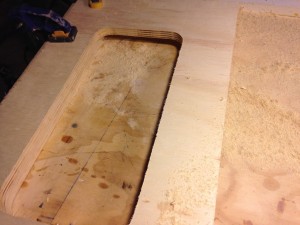
A routing jig for the final cuts. There are two, actually: one for the smaller ports and one for the larger.
In the photo below, the holes have been routed to their final dimensions and the board is ready for gluing up to the house side. (This one goes on the port side.)
West System epoxy with the slow-cure hardener was used. The epoxy was thickened, then applied to to the board and the cabin-house side.

Here the epoxy has dried and the clamps have been removed. There’s still a lot of work to do in cleaning up all that dried epoxy.
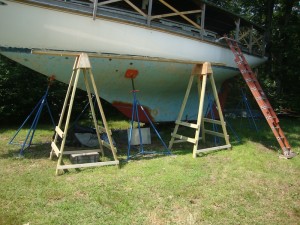
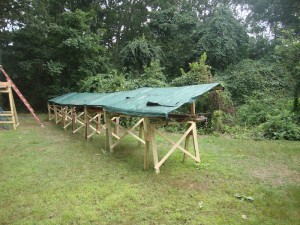
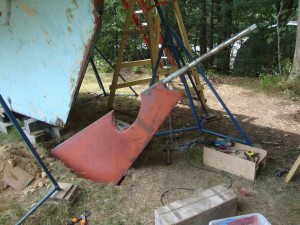
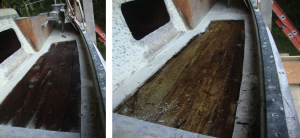
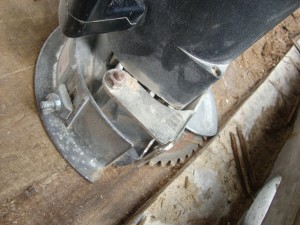
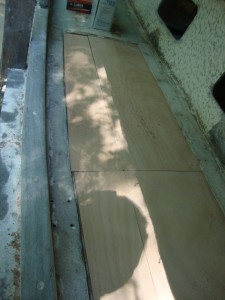
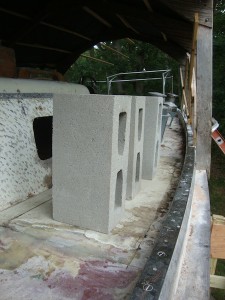
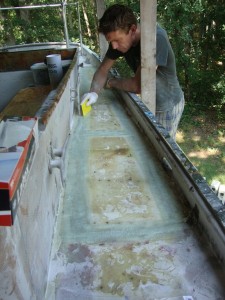
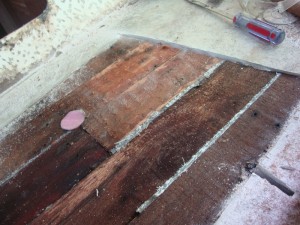
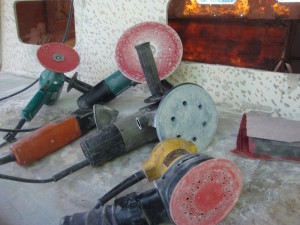
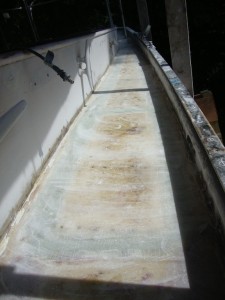
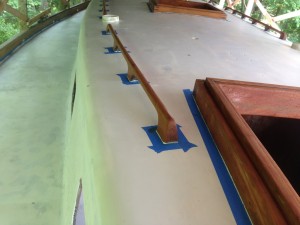
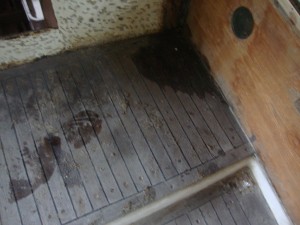
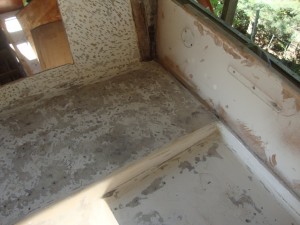

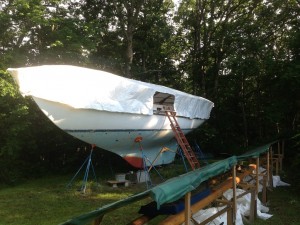
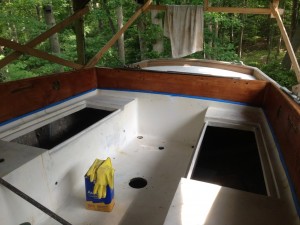

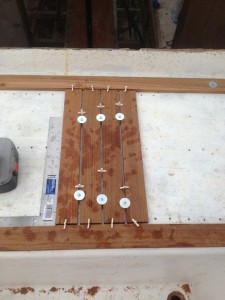

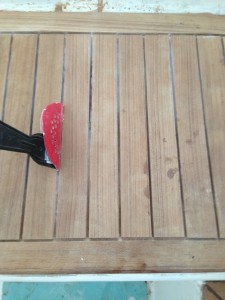
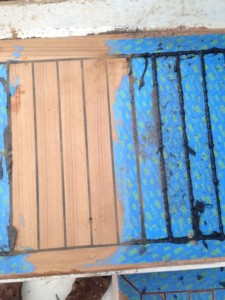
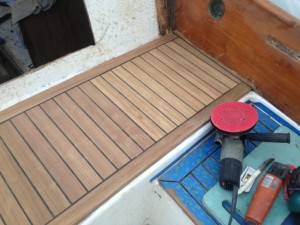
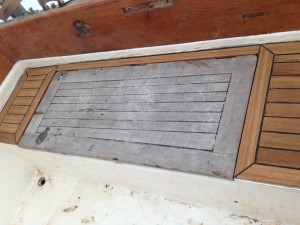
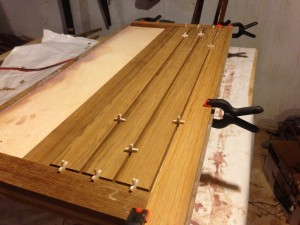

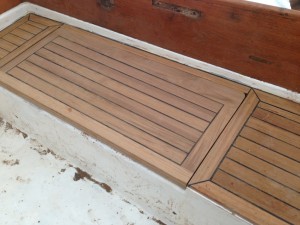
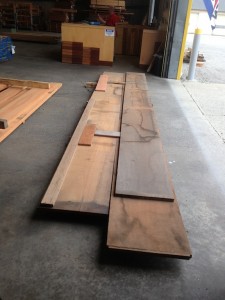
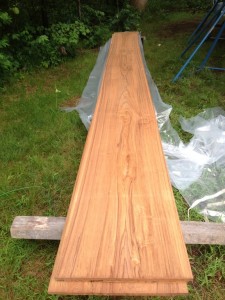
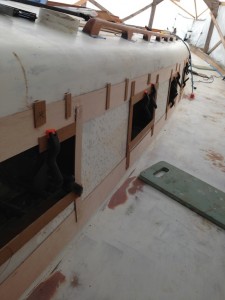
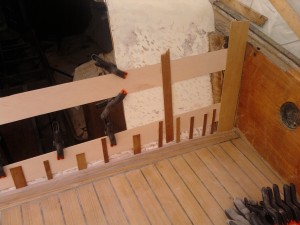
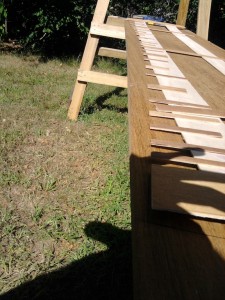
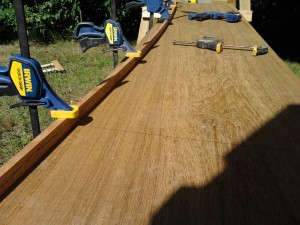
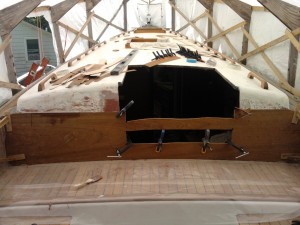
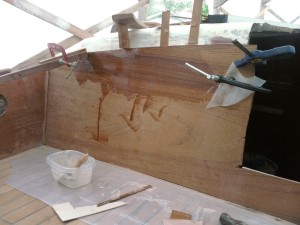
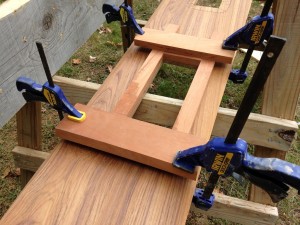
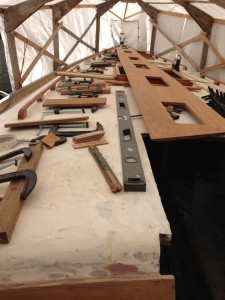
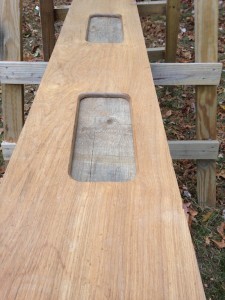
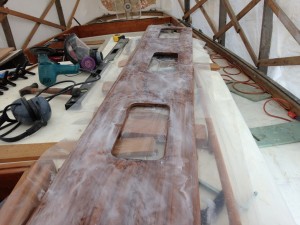
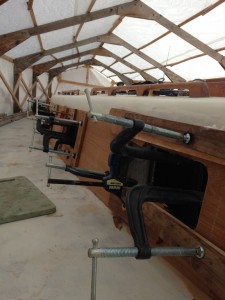
Linda
03/06/2014 — 11:10 pm
After reviewing Phases 1-3, Phase 4 should give you a real since of accomplishment.
Impressive. Good going!
Trish
03/11/2014 — 10:43 pm
Mike…amazing how much work you’ve done. This blog is a great way to organize and log your restoration…nice.
Bob Poindexter
08/07/2014 — 12:00 am
Thank you for sharing your experiences and techniques on this project. I have an Offshore 40 (Moshulu) on which I am removing the teak deck this summer. Fortunately, no core problems found so far. I hope you get sailing before too long.
Mike
08/07/2014 — 12:55 pm
Thanks Bob. I have a more detailed write up of my teak deck removal. I’ll send it along to later today. Mike